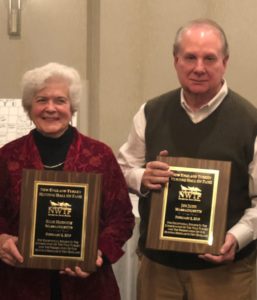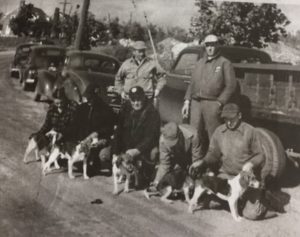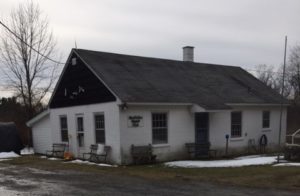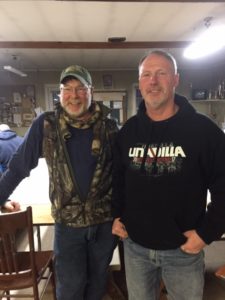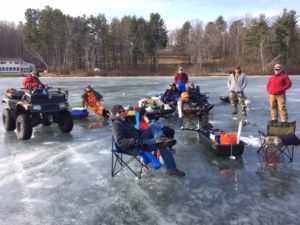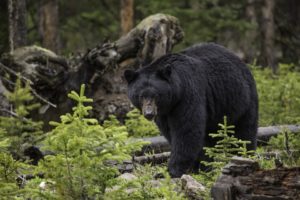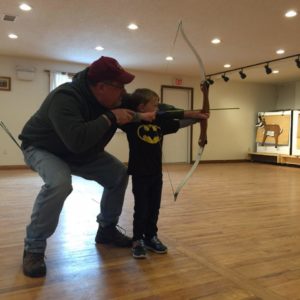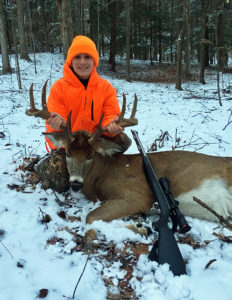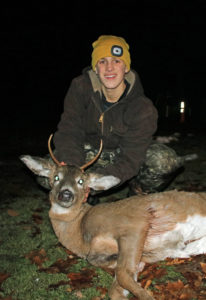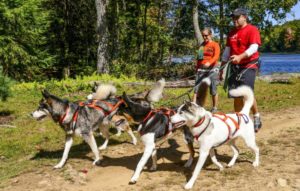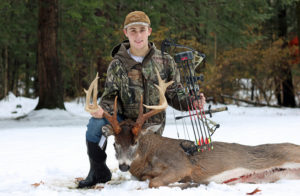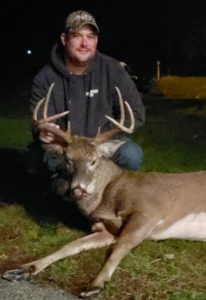Each year, MassWildlife recognizes anglers who catch exceptional freshwater fish in waters open to the public. If you submit the largest or longest fish in an eligible species category, you will get a gold pin and a plaque, and you’ll also be honored in a MassWildlife awards event.
Log onto https://www.mass.gov/service-details/gold-pin-winners to see all of the 2018 winners in the Adult Catch & Keep, Youth Catch & Keep and Catch & Release categories. You will notice that there were 4 gold pins awarded to local anglers or fish caught out of local waters.
In an upcoming ceremony to be held at the MassWildlife Field Headquarters in Westborough, MA, the lucky anglers will receive gold pins and plaques commemorating their great feats.
Winners/waters from our area were as follows:
Adult catch & keep category:
Brown Trout, 9 lbs10 oz caught out of Onota Lake by Kevin Janis of Pittsfield; Carp, 30 lbs 1 oz, caught out of the Housatonic River in Lenox. Northern Pike, 19 lbs6 oz caught out of Onota Lake by Bryan Kopola of Windsor. (You may remember that Kevin Janis caught last year’s gold pin Northern Pike out of Cheshire Reservoir).
Catch & release gold pin winners
Northern Pike, 42 inches, caught out of Onota Lake by Joshua Blood of Agawam,
2018 Angler of the Year award winners
The Catch & Keep Angler of the Year Award is given to the person who weighs in the largest number of species that meet the minimum weight requirements for the previous calendar year. The award promotes awareness of the Commonwealth’s underutilized fish species and recognizes an angler’s ability to catch a wide variety of trophy species.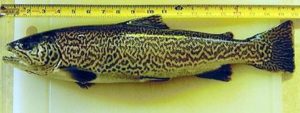
The Catch & Release Angler of the Year Award is awarded to the person who submits the largest number of species that meet the minimum length requirements for the previous calendar year.
This year the winners were:
Adult Catch & Keep Category: Todd Matera of Palmer, MA with 11 species. Matera received State pins for the following fish: brown trout, carp, channel catfish, crappie, landlocked salmon, largemouth bass, smallmouth bass, sunfish, white catfish, white perch and yellow perch. Todd was also the Angler of the year in 2005.
Youth Catch & Keep Category: (There was a tie) Jason Bunar of Kingston, MA with 21 species. He received State pins for the following fish: bowfin, brook trout, brown trout, bullhead, carp, chain pickerel, channel catfish, crappie, lake trout, landlocked salmon, largemouth bass, northern pike, rainbow trout, shad, smallmouth bass, sunfish, tiger trout, walleye, white catfish, white perch and yellow perch. Jason was also Angler of the year in 2016 and 2017.
Andrew Langley, Peabody, MA, also with 21 species. He received State pins for the following fish species: bowfin, brook trout, brown trout, bullhead, carp, chain pickerel, channel catfish, crappie, lake trout, landlocked salmon, largemouth bass, northern pike, rainbow trout, shad, smallmouth bass, sunfish, tiger trout, walleye, white catfish, white perch and yellow perch.
Catch & Release Angler Category: Michael Nee of Northborough, MA with 25 species.
Michael received state pins for the following species of fish: bowfin, brook trout, brown trout, bullhead, carp, chain pickerel, channel catfish, crappie, lake trout, landlocked salmon, largemouth bass, northern pike, rainbow trout, shad, smallmouth bass, sunfish, tiger trout, walleye, white catfish, white perch and yellow perch. Michael was also Angler of the year in 2015, 2016 and 2017.
New State record fish caught in 2018 were as follows in the Catch & Release Category:
Bowfin – 30 inches caught out of the Connecticut River in Springfield by Kevin Lavimodiere of North Attleboro.
Bullhead – 20.75 inches caught out of Baldpate Pond in Boxford, by Roger Aziz, Jr. of Methuen. Landlocked Salmon – 27.25 inches caught out of Quabbin Reservoir by Gary Morin of Hardwick.
Largemouth Bass – 25 inches caught out of White Pond in Concord by Tracy Como-Bowe of Concord.
Largemouth Bass – 25 inches caught out of Great Herring Pond in Plymouth by Dylan Towne of Wareham.
Walleye – 29.50 inches caught out of the Connecticut River in Turners Falls by Jason Wingrove of Greenfield.
Walleye – 29.50 inches caught out of the Connecticut River in Holyoke by Michael Taylor of South Hadley.
White Perch – 18 inches caught out of Wachusett Reservoir by Prince Dukuly of West Boylston.
There were no state record fish caught in the Adult or Youth Catch and Keep categories. Probably the reason for so many state records in the Catch and Release category is that this category is still relatively new, having started in 2015 and the records will frequently change for a while.
Coyote attack
A couple of weeks ago a 16- year old Norwell, MA teenager, Anna Hollander, was bitten by what was believed to be a coyote, according to Marion Larson, a spokeswoman for MassWildlife. They are fairly confident that this was most likely a rabid coyote based upon the description of its behavior.
The girl was sitting in her driveway when the animal came up to her and bit her on the arm. “She didn’t see it coming,” said her mother Tara, “It snarled at her and then snarled as it was biting her.
She said her daughter swung her arm, trying to break free from the grip of the animal’s jaws, and then sprinted into the house. Anna ran so fast that one of her shoes came off. The coyote chased her as she ran but stopped when she reached the stairs. Once she was safely inside, she called 911.
The coyote switched its attention to the shoe, grabbed it, shook it violently and ran off with it across the street, and disappeared into the woods. Police searched the area but they were unable to locate the animal. But they did find Anna’s shoe, which was about 10 feet into the woods.
“It has not been seen or heard from since that day,” said Larson, “If it was rabid, it may be dead as the disease kills animals within a few days. We are still reviewing and following up with local officials to determine if there have been reports of unusual acting coyotes.”
The girl was left with several puncture wounds on her arm and had to undergo a series of rabies shots, but she’s expected to make a full recovery.
Coyote attacks on humans are rare. Counting last week’s attack, there have been 12 documented cases of coyote attacks on humans in Massachusetts in the last 21 years, with the first documented attack being in 1998. According to MassWildlife, in most of those cases, the coyotes tested positive for rabies or were suspected to be rabid. Some of the incidents involved coyotes that had become overly accustomed to people, Larson said.
MassWildlife requests people to report any unusual animal behavior to local authorities.
To make your property less attractive to coyotes, MassWildlife officials recommend feeding your pets indoors. Make sure your garbage is secured in tough plastic containers with tight-fitting lids, and keep it indoors whenever possible. Clear away any fruit that falls from trees in your yard, and if you have bird feeders, clean up any birdseed that spills onto the ground. If you see coyotes around your yard regularly, you should probably remove the bird feeders.
Larson said it’s also important to keep coyote attacks in perspective. “You’re far more likely to get bitten by a dog than a coyote. A local Animal Control Officer probably gets more than 12 calls about dog bites in one year in one town.”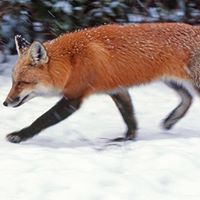
Parts of the above information came from Emily Sweeney’s March 7 article in the Boston Globe entitled, “Norwell mom describes coyote attack on her daughter”.
Coyote Contest
Some 29 coyotes were entered into Dave’s Sporting Goods Coyote Contest this year, and the winner was Carl Dolle of Clarksburg. He bagged the most with a total of 15. Joe Trybus, of Lanesborough came in second with a count of 13. The largest coyote, weighing 42 lbs was taken by Glen Curtis. Congratulations to all.

